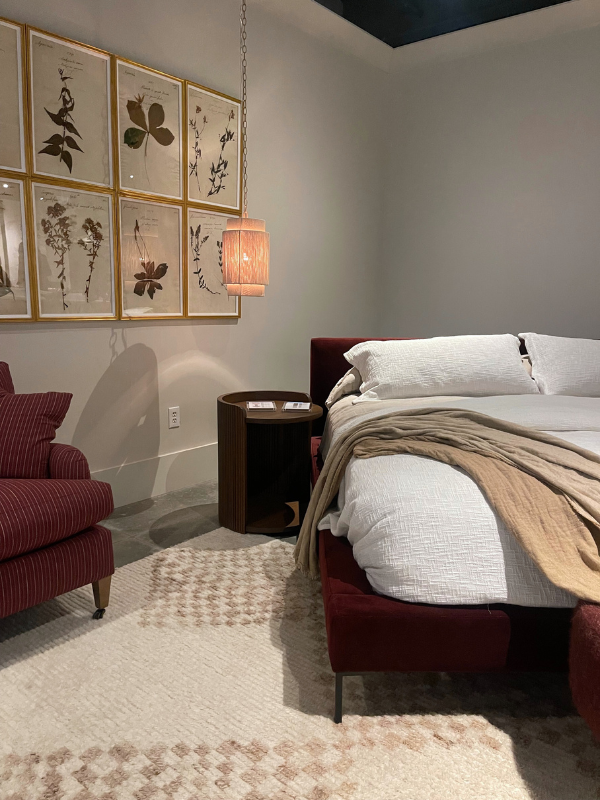A few conversations drifted toward tariffs and the usual business worries, but the energy on the ground at High Point Market certainly didn’t match that anxiety this October. Designers seemed focused, confident, and excited to find stunning pieces for their clients.
Traditional design made an unmistakable return. Not the nostalgic version packed with fussy detailing and excessive ornament, but a cleaner, more sculptural interpretation of heritage. Many showrooms leaned into forms we’ve all known for decades, and yet the pieces didn’t feel predictable or overdone. You could see the shift this season almost immediately: darker woods, richer palettes, and intriguing silhouettes.
Some of this felt like a natural correction after alternating years of either “dopamine decor” or stark minimalism. Showrooms were grounded rather than weightless and interiors were curated yet lived in. Below is our High Point Market October 2025 trend recap; we hope you enjoy our team’s insights!
How This Season’s Trends Compare to Recent Markets

Looking back at High Point over the last few years, Fall 2025 feels somewhat like a turning point. Earlier seasons, especially Spring 2025, were full of bold contrasts. That April Market leaned heavily into black leather, stacked tables, masculine motifs, and ’70s–’80s callbacks. Dark woods did make an appearance then, but their presence felt a bit surprising for spring. This fall, those same deeper finishes feel less like a departure and more like the natural continuation of a longer story.
In 2022, earthy palettes and organic materials dominated showrooms. Craftsmanship was celebrated then too, although the conversation was often tied to sustainability. Backdrops were still fairly neutral and silhouettes had that post-pandemic softness designers gravitated toward. Fall 2025 doesn’t abandon those values, but it does refine them a bit. The woods are darker, the curves have more structure, and the colors are more weighted, saturated, and substantial.
An Evolving Language of Comfort
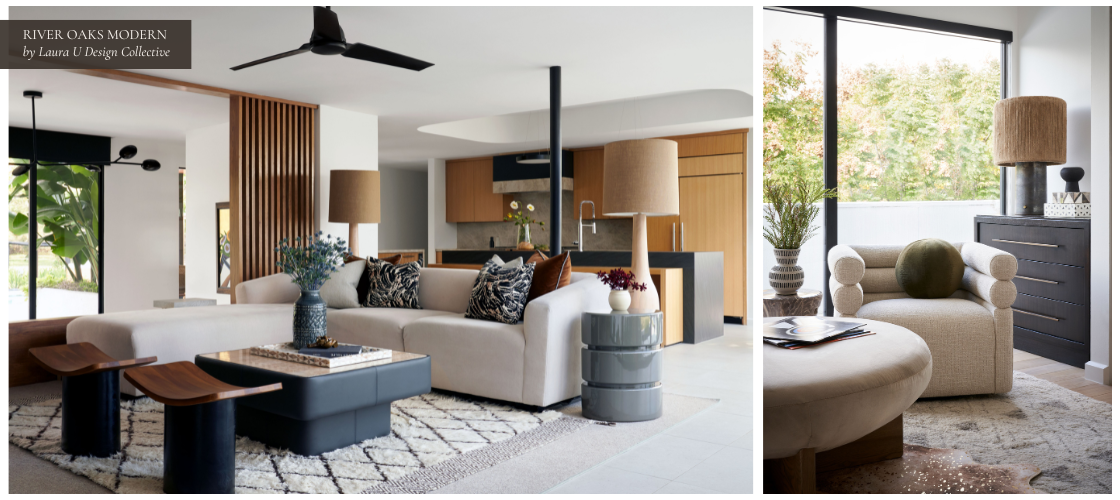
Comfort has been an undercurrent at nearly every Market since 2021. Puffy upholstery in 2022, rounded silhouettes in 2023 and 2024, the curved everything of Spring 2025. The idea reappears this season, but it’s framed differently. Instead of oversized pieces or exaggerated softness, Fall 2025 brings comfort through refinement. Curves remain important, though they sit within more tailored outlines. Scallops surface again, but they feel edited, maybe even a bit more architectural.
It’s interesting to see how much restraint defines that shift. The curves of earlier years were often exuberant. These feel intentional, almost calm. You could argue that this aligns with the broader return to heritage materials. Comfort doesn’t rely on volume anymore. It comes through craftsmanship, proportion, and texture.
Color Evolves From Dopamine to True Depth

Color has swung widely over the past few Markets. Spring 2025 celebrated moody tones layered across walls, upholstery, and millwork. Before that, we were talking about dopamine décor, monochrome palettes, and the ongoing popularity of saturated jewel tones. This fall’s palette doesn’t necessarily contradict those trends, but it softens their edges.

Rust, burgundy, ochre, deep green, navy, and even a bit of avocado appeared across showrooms. Instead of feeling theatrical, these hues settled into the rooms with a sort of lived-in confidence. They didn’t compete with form. They supported it. Compared to 2022’s neutral-forward direction or the more playful color experiments of 2023 and 2024, Fall 2025’s palettes feel grounded. They’re richer, yes, but also more mature.
We Continue to Pull at the Thread of Craft

One striking through-line across the past few Markets is the emphasis on craftsmanship. In 2022, it appeared in joinery, hand-stitched details, and a renewed interest in artisan-made furniture. Spring 2025 saw similar attention to woodworking, upholstery, and subtle tailoring. This fall builds on that interest and then adds something more personal. Designers talked openly about the makers behind the pieces, the small decisions that define quality, and the value of materials that age well.
Even the resurgence of alabaster feels connected to that broader conversation. It’s not a new material, but the way exhibitors treated it this season suggests a deeper appreciation for nuance. Earlier Markets favored novelty; Fall 2025 favors longevity.
HPMKT Fall 2025: A Season Centered on Home, Heritage, and Handwork
Floral Motifs with Wide Variety

Florals appeared everywhere, although the tone changed dramatically from one showroom to another. Hickory Chair presented the most classic interpretation with chinoiserie-inspired panels and upholstery filled with branches, birds, and those finely painted garden scenes they do so well. Meanwhile, Vanguard pushed florals toward something more graphic, perhaps a bit postmodern.
That variety made florals feel relevant instead of purely nostalgic. They weren’t sugary or domineering. They were expressive in a way that suggests designers are still having fun with pattern, even in a market leaning a bit more traditional.
A Return to Dark Woods and Heritage Finishes
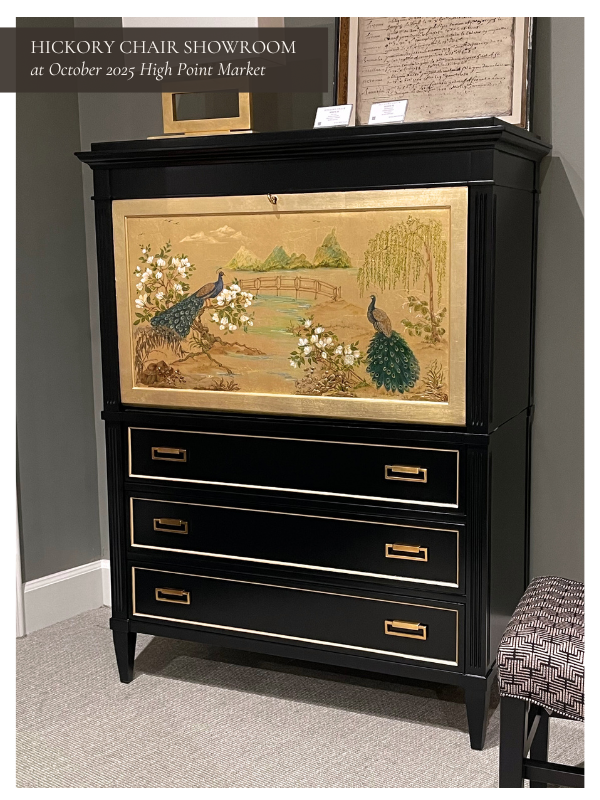
One of the strongest themes this season was the embrace of darker finishes. Espresso, walnut, and mahogany appeared in nearly every showroom we walked; they were, perhaps, the most prevalent of the trends on this list. Century, Hickory Chair, Rowe… each presented collections where these finishes performed as counterweights to softer silhouettes and cozy textures.

Earlier markets favored pale, airy woods that were compatible with contemporary, minimalistic design. This season leaned away from that, back in time toward weight, depth, and history. Even if they were brand new, many of these pieces felt vintage or antique. Baker underscored that shift with their signature burgundy finish, which seemed to set the tone for the broader Market: elegant, moody, and self-assured.
Curves, Scallops, and Feminine Forms
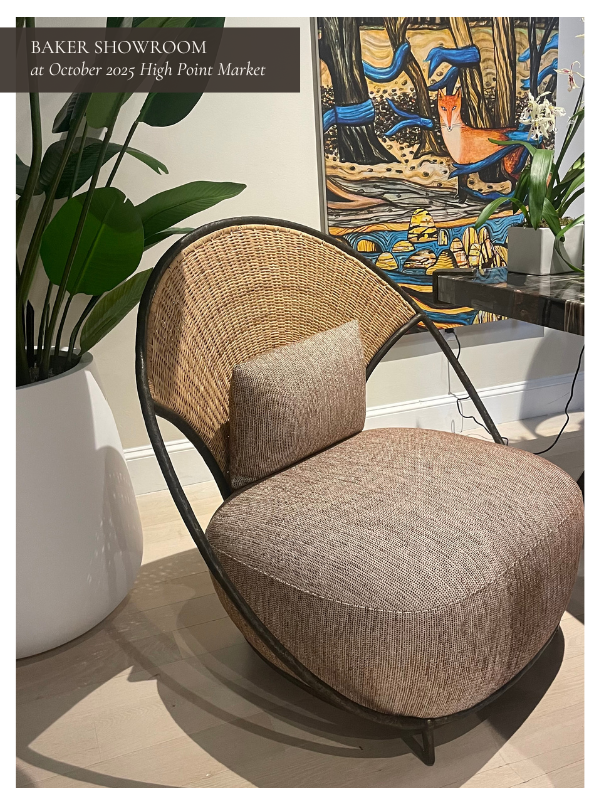
Curves have been creeping back into design for a while, but this Market made that return feel more intentional. Scalloped edges cropped up in headboards, aprons, and the occasional skirted chair. Rounded backs softened case goods that might otherwise have seemed very structured. Scalloped edges appeared on headboards and aprons.
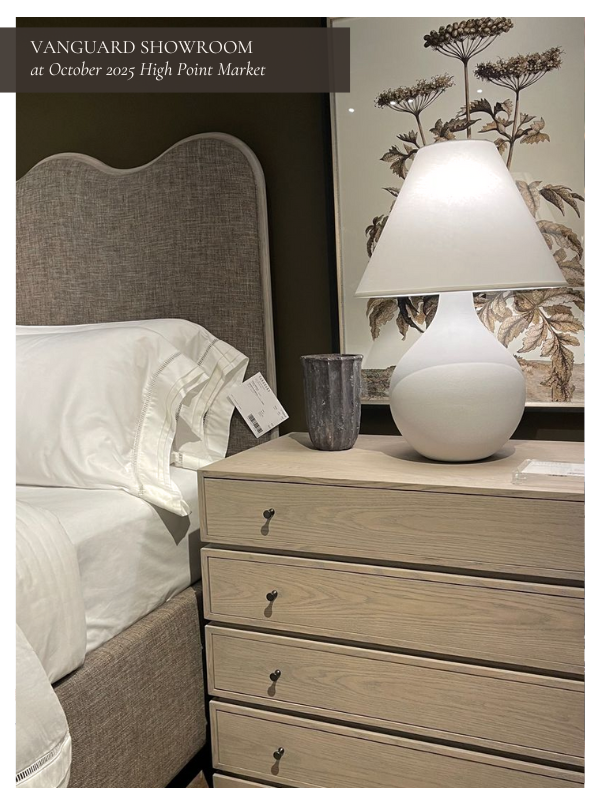
Hickory Chair leaned into arched profiles in deeper tones. Vanguard experimented with scalloped framing that interrupted the geometry of their more architectural forms. At Verellen, the combination of softened shapes and darker palettes created rooms that felt romantic and atmospheric. None of these felt delicate or overly feminine.
Textures with Weight and Real Presence

Texture mattered this Market. It wasn’t a minor theme or an afterthought. Mohair, velvet, structured leathers, heavy woods… every showroom embraced tactile materials that instantly change how a room feels. Even simple silhouettes had more presence, weight, and personality when upholstered in boldly textured materials.
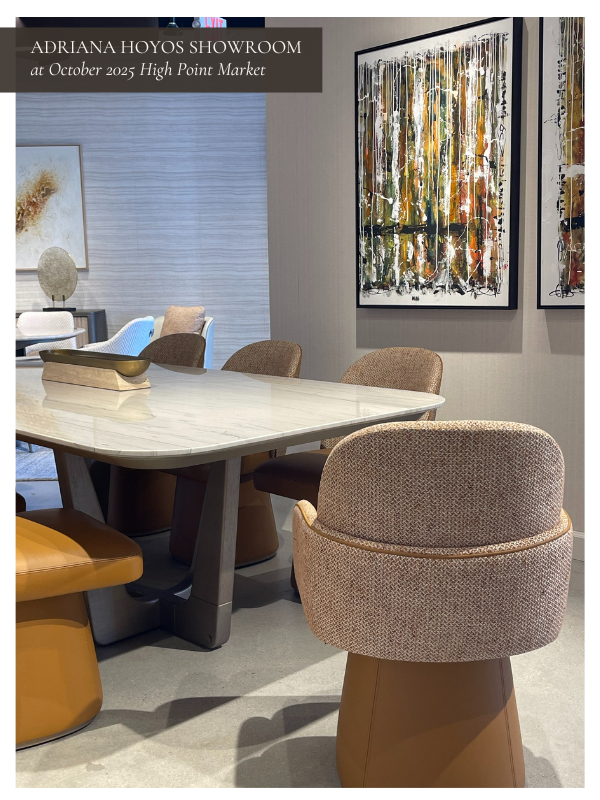
This renewed emphasis on texture also tied into larger conversations happening across showrooms. Artisanship, real artisanship, took center stage. Laura mentioned a personal tour with Jamie Young, who shared stories of the makers behind her pieces. That intimacy between designer and craftsperson echoed throughout Market visitors’ observations.
Jewel and Earth-Tone Palettes

Color moved away from the familiar calm of gray and beige we’ve seen in more minimalistic Markets. Instead we saw burgundy, rust, ochre, navy, evergreen, and even flashes of vibrant orange. These weren’t the loud palettes we’ve seen in the maximalist Markets where “dopamine decor” reigned supreme, either. They were layered and confident, often with quite a bit of texture. Some designers pointed toward a subtle return to 1970s combinations, including a surprising amount of avocado.

Vanguard balanced deep wine with soft champagne. Rowe introduced evergreen and rust in ways that felt timeless rather than thematic. Four Hands leaned into amber and oxblood, which we absolutely adored.
Read More About HPMKT’s Latest Iteration in DesignDash Magazine
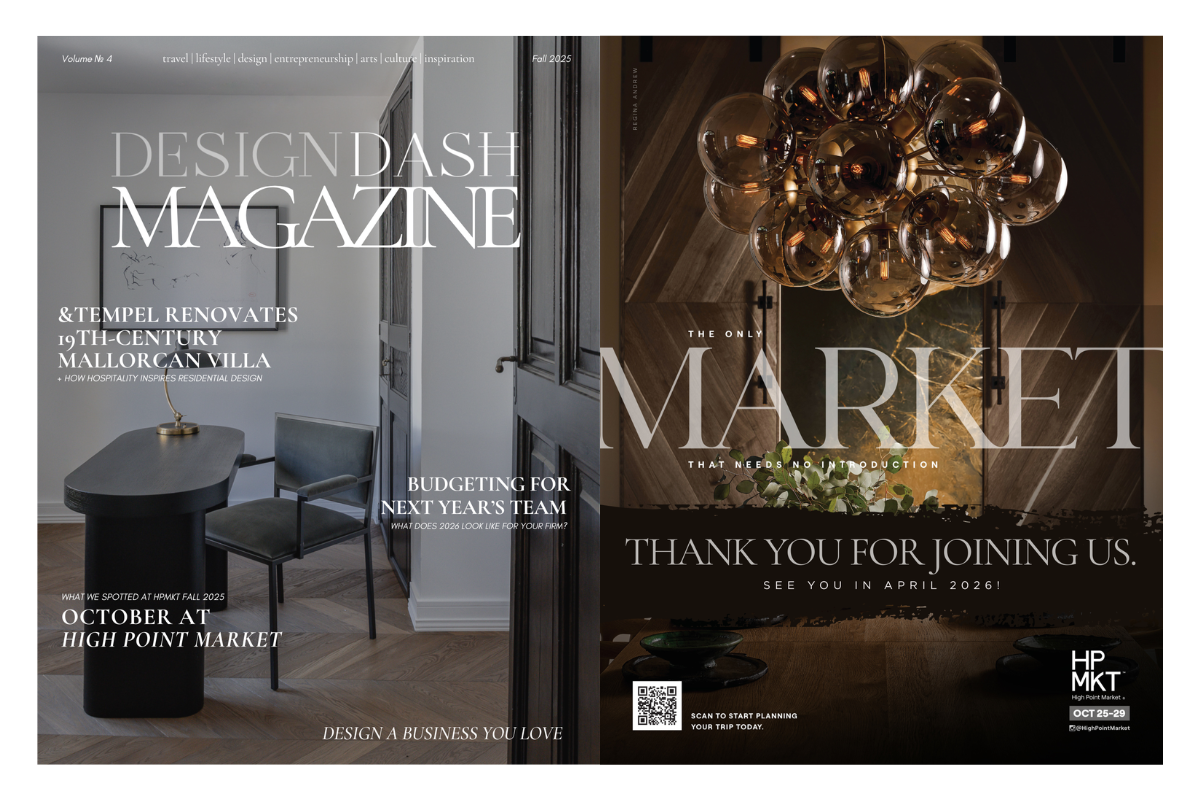
*DesignDash is sponsored by High Point Market.


